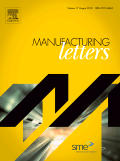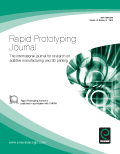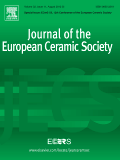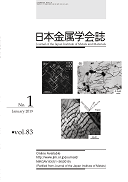
INTERNATIONAL JOURNAL OF POWDER METALLURGY
Scope & Guideline
Championing Excellence in Powder Metallurgy Research
Introduction
Aims and Scopes
- Additive Manufacturing Techniques:
The journal covers various additive manufacturing processes such as binder jetting and laser powder bed fusion, emphasizing their applications in producing complex geometries and enhancing material properties. - Microstructure and Mechanical Properties:
Research in this area explores the relationship between processing parameters and the resulting microstructure and mechanical properties of powder metallurgy components, providing insights into optimizing performance. - Sintering and Distortion Analysis:
The journal investigates the sintering process, including liquid-phase sintering and its effects on dimensional stability, which is crucial for manufacturing precision components. - Sustainability and Environmental Impact:
There is a strong emphasis on sustainable practices within powder metallurgy, focusing on the development of eco-friendly materials and processes that minimize environmental impact. - Metal Injection Molding (MIM):
The journal frequently publishes studies on MIM, exploring advancements in feedstock preparation, processing techniques, and the resulting component characteristics. - Material Characterization and Testing:
Papers often present novel methods for characterizing metal powders and assessing their flowability, moisture content, and other critical properties essential for successful processing.
Trending and Emerging
- Integration of Artificial Intelligence (AI):
There is an increasing trend in applying AI techniques for optimizing powder metallurgy processes, enhancing material characterization, and predicting performance, showcasing the intersection of traditional metallurgy with modern computational techniques. - Sustainable Practices and Materials:
Research focusing on sustainability, including the development of environmentally friendly powders and processes, is on the rise, highlighting the industry's commitment to reducing its ecological footprint. - Fatigue and Mechanical Performance Studies:
An emerging focus on understanding the fatigue behavior and mechanical properties of PM components under various loading conditions is evident, indicating the industry's need for reliable materials in demanding applications. - Characterization Techniques for Additive Manufacturing:
There is a growing emphasis on innovative characterization methods specifically tailored for powders used in additive manufacturing, which is crucial for ensuring quality and performance in 3D-printed components. - Advanced Alloy Development:
The journal is increasingly publishing research on the development of novel alloys tailored for specific applications in powder metallurgy, reflecting a trend towards customization and enhanced material properties.
Declining or Waning
- Traditional Powder Metallurgy Techniques:
There is a noticeable decrease in studies focusing solely on traditional powder metallurgy techniques, such as conventional sintering, as newer methods and technologies gain traction. - Historical Reviews and Case Studies:
The frequency of historical analyses and case studies related to past practices in powder metallurgy has diminished, suggesting a pivot towards more forward-looking research and real-time innovations. - Basic Powder Processing Techniques:
Research that centers around fundamental powder processing techniques, without integrating advanced technologies or applications, is becoming less common as the field evolves towards more complex methodologies.
Similar Journals

Manufacturing Letters
Advancing the Future of Manufacturing Innovation.Manufacturing Letters is a premier academic journal published by Elsevier, dedicated to advancing the fields of Industrial and Manufacturing Engineering and Mechanics of Materials. Established in 2013, this journal has quickly gained recognition, achieving a Q2 ranking in both disciplines as of 2023, highlighting its significance in the rapidly evolving manufacturing landscape. With an ISSN of 2213-8463, Manufacturing Letters provides a platform for researchers and industry professionals to share critical insights and innovative findings that drive the manufacturing sector forward. The journal is indexed in Scopus, where it ranks in the top 65th percentile for Industrial and Manufacturing Engineering and the 61st percentile for Mechanics of Materials, reflecting its impact in the scientific community. While primarily accessible through subscription, Manufacturing Letters aims to facilitate knowledge exchange, promote sustainable practices, and foster collaboration among individuals passionate about enhancing manufacturing efficiency and material development. This journal is indispensable for anyone looking to contribute to or understand the future of manufacturing.

JOURNAL OF MATERIALS PROCESSING TECHNOLOGY
Connecting Researchers to the Future of Materials ScienceJOURNAL OF MATERIALS PROCESSING TECHNOLOGY, published by ELSEVIER SCIENCE SA, is a premier international journal dedicated to the dissemination of cutting-edge research in the field of materials processing. With an impact factor indicative of its high academic quality, this journal features a diverse range of topics, including ceramics, composites, metals, and manufacturing technologies, thereby inspiring innovations within its community. As a recognized Q1 journal across multiple categories—including Ceramics and Composites, Computer Science Applications, Industrial and Manufacturing Engineering, and Modeling and Simulation— it ranks among the top in its field. The journal's rigorous peer-review process ensures the publication of only the most significant and relevant studies, supporting researchers, professionals, and students in advancing their knowledge and expertise. With its commitment to excellence, the JOURNAL OF MATERIALS PROCESSING TECHNOLOGY remains a vital resource for those aiming to push the boundaries of materials science and engineering.

Acta Metallurgica Slovaca
Exploring the forefront of metallurgical research and collaboration.Acta Metallurgica Slovaca is a distinguished open-access journal published by SCICELL SRO that has been pivotal in the field of Materials Science and Metallurgy since its inception. With a robust commitment to disseminating high-quality research, this journal covers a wide array of topics within the scope of metals and alloys. Now indexed in Scopus, it ranks 82nd out of 176 in its category, reflecting a growing influence within the scientific community. With a quartile ranking of Q3 as of 2023, Acta Metallurgica Slovaca serves as an essential platform for researchers and professionals seeking to share innovative findings and developments in metallurgical science. Open access since 2013, it ensures that research is accessible to all, fostering collaboration and engagement across academia and industry worldwide. With a converged publication timeline extending from 2009 to 2024, this journal continues to play a crucial role in advancing knowledge and addressing contemporary challenges in the metallurgy sector.

RAPID PROTOTYPING JOURNAL
Connecting Theory and Practice in Prototyping InnovationRAPID PROTOTYPING JOURNAL, published by Emerald Group Publishing Ltd, is a premier platform for advancing the field of rapid prototyping and related technologies. With an ISSN of 1355-2546 and an E-ISSN of 1758-7670, this vital journal has been serving the academic community since 1995 and will continue to deliver groundbreaking research through 2024. Recognized for its scholarly impact, it proudly holds a Q1 ranking in both Industrial and Manufacturing Engineering and Mechanical Engineering as of 2023, reflecting its commitment to quality and relevance in a rapidly evolving field. With Scopus rankings placing it in the top tier—#84 out of 672 in Mechanical Engineering and #59 out of 384 in Industrial and Manufacturing Engineering—this journal offers a rich repository of knowledge for researchers, professionals, and students alike. Though access is via subscription, the journal's rigorous peer-review process ensures that each published article contributes valuable insights into innovative methodologies, materials, and technologies shaping the future of manufacturing. As such, RAPID PROTOTYPING JOURNAL stands as an essential resource for anyone invested in the advancement of engineering and prototyping practices.

Journal of the European Ceramic Society
Catalyzing Breakthroughs in Ceramic TechnologiesThe Journal of the European Ceramic Society, published by Elsevier, is a premier academic periodical dedicated to the cutting-edge advancements in the fields of ceramics and composites, as well as materials chemistry. With an impressive impact factor that places it in the top quartile (Q1) of its category, it ranks #33 out of 317 in Materials Science and #16 out of 127 in Ceramics and Composites, showcasing its strong influence in the scientific community. Established in 1989 and set to converge until 2025, this journal serves as a critical platform for researchers and professionals to disseminate their findings, share ideas, and foster collaboration in the rapidly evolving area of ceramic materials. Although it does not offer Open Access options, the journal ensures rigorous peer review and maintains high standards for publication, making it an essential resource for students, academics, and industry experts who are pushing the boundaries of material science.

JOURNAL OF THERMOPLASTIC COMPOSITE MATERIALS
Pioneering Insights in Ceramics and Composite MaterialsJOURNAL OF THERMOPLASTIC COMPOSITE MATERIALS, published by SAGE PUBLICATIONS LTD, is a cutting-edge journal dedicated to advancing the field of thermoplastic composites and their applications within ceramics and condensed matter physics. With an ISSN of 0892-7057 and an E-ISSN of 1530-7980, the journal boasts a strong academic reputation evidenced by its impressive impact factor as well as its classification in the 2023 Q2 category for both Ceramics and Composites and Condensed Matter Physics. Ranked #60 in Condensed Matter Physics and #26 in Materials Science by Scopus, the journal plays a pivotal role in disseminating innovative research findings, trends, and advancements to a global audience. Spanning research from 1988 to 2024, it serves as an essential resource for researchers, professionals, and students alike, fostering collaboration and promoting knowledge in the ever-evolving landscape of thermoplastic composite materials. Although currently not open access, the comprehensive content and critical insights provided by this journal are invaluable for those engaged in cutting-edge research and practical applications in these fields.

Uspekhi Fiziki Metallov-Progress in Physics of Metals
Connecting Knowledge in Metal ResearchUspekhi Fiziki Metallov - Progress in Physics of Metals, published by the G V KURDYUMOV INST METAL PHYSICS NAS UKRAINE, is a distinguished open-access journal that has been advancing the field of metal physics since 2000. With an ISSN of 1608-1021 and E-ISSN of 2617-0795, this journal is pivotal for disseminating rigorous research findings and innovations across diverse subfields including Condensed Matter Physics, Electronic, Optical and Magnetic Materials, and Fluid Flow and Transfer Processes. The journal's strong impact, reflected in its Q2 and Q3 quartile rankings across several categories and a commendable Scopus ranking, places it at the forefront of materials science and engineering. Researchers, professionals, and students can benefit from its rich repository of high-quality articles aimed at fostering knowledge and collaboration in metal physics. With an accessible repository and commitment to the open-access model, Progress in Physics of Metals strives to make significant contributions to the global scientific community, shaping the future of metal-based research.

ACTA METALLURGICA SINICA
Leading the Charge in Mechanical and Geotechnical EngineeringACTA METALLURGICA SINICA, established in 1978 and published by SCIENCE PRESS, stands as a preeminent journal in the fields of metallurgy and materials science. This journal is particularly revered for its contributions to Metals and Alloys, Mechanical Engineering, Geotechnical Engineering, and Mechanics of Materials, with a commendable Q1 ranking in Metals and Alloys and notable placements in other engineering disciplines. With a robust history of facilitating scholarly communication from 1978 to 1991 and consistently since 1996, the journal provides a vital platform for researchers and practitioners to disseminate significant advancements in material science. Despite being a subscription-based journal, ACTA METALLURGICA SINICA remains pivotal, holding a Scopus ranking that places it in the top tiers of its categories, fostering an environment ripe for innovation and collaboration. This ensures that the journal remains central to the ongoing discussions and developments within the metallurgy community, serving both academic and professional interests.

Journal of the Japan Institute of Metals and Materials
Exploring innovations in metals and materials research.Journal of the Japan Institute of Metals and Materials (ISSN: 0021-4876, E-ISSN: 1880-6880) serves as a vital academic platform under the esteemed auspices of the Japan Institute of Metals & Materials. This journal, with a rich publication history dating back to 1937, focuses on advancing knowledge in the fields of metallurgy, materials science, and engineering, making it an important resource for researchers, professionals, and students alike. Although the journal has been categorized in Q4 quartiles across several subject areas, including Condensed Matter Physics and Materials Chemistry, it plays a critical role in disseminating essential findings and fostering discussion regarding innovations in metal and materials research. Notably, the journal operates without open access, which encourages targeted readership engagement through its curated content. Based in Japan, it continues to contribute significantly to the academic community by bridging the gap between scientific inquiry and practical application in materials technology.

METALS AND MATERIALS INTERNATIONAL
Connecting researchers to the forefront of materials science.METALS AND MATERIALS INTERNATIONAL, published by the Korean Institute of Metals and Materials, is a prestigious journal dedicated to the advancement of research in the fields of materials science and engineering. With an ISSN of 1598-9623 and a robust e-ISSN of 2005-4149, this journal has established itself as a crucial platform for disseminating innovative findings and key advancements that span condensed matter physics, materials chemistry, mechanics of materials, and the technology of metals and alloys. Its Q1 rankings in multiple categories attest to its high impact and relevance in the academic community, placing it among the top journals in its fields with Scopus rankings that reflect a strong international footprint. Here, researchers, professionals, and students can access cutting-edge research and insights, fostering collaboration and exploration of new materials and their applications. With a commitment to excellence and a convergence of knowledge from 1996 to 2024, METALS AND MATERIALS INTERNATIONAL continues to enhance our understanding of materials and their transformative impact on technology and engineering.